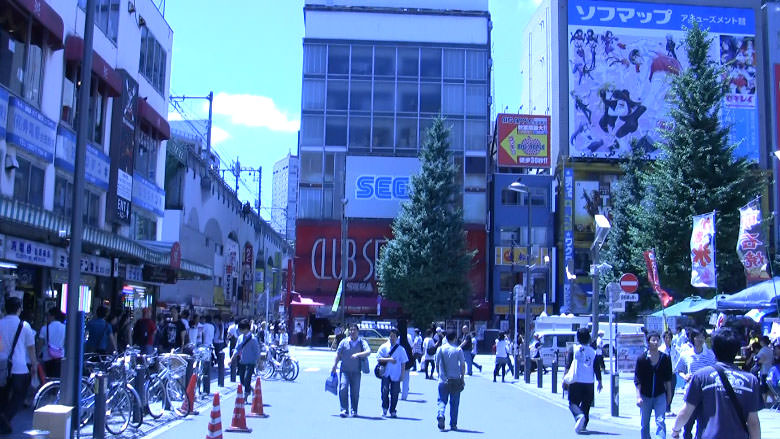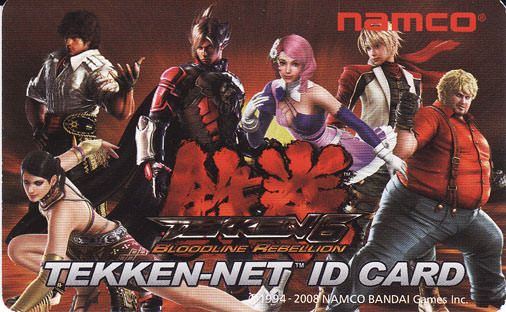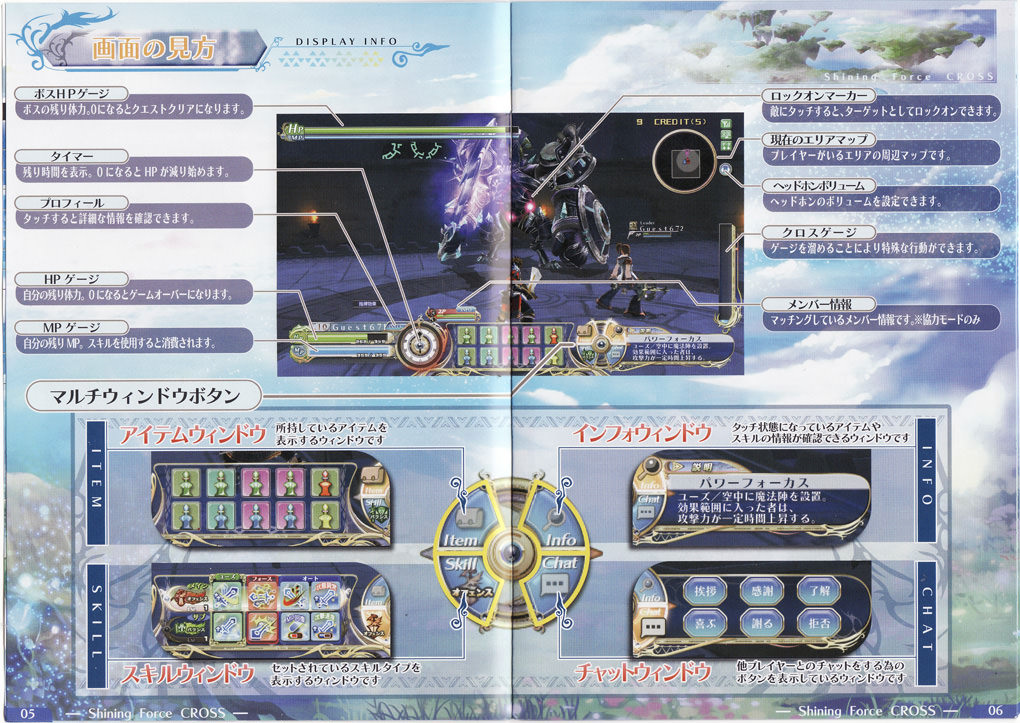The next arcade on my list of places to see in Akihabara, we inadvertently came across Taito HEY (Hirose Entertainment Yard) about a minute after leaving Club SEGA. HEY occupies floors two through four of the 5-level Hirose Honsya building. Hirose's basement level, like Asobit City and other places in the district, was dedicated to various manga including hentai, lolicon, and dojinshi (self-published works) in the form of a store called Melonbooks. The first floor, like GiGO and Club SEGA, was dedicated to claw games and featured a sign advertising a Super Street Fighter IV Arcade Edition playtest.
The second floor is where the good stuff started, and it was here that I had what was probably my favorite arcade experience of the trip. After browsing a floor dominated by dozens upon dozens of shoot 'em ups (and playing a bit of Dogyuun myself), I noticed a small crowd of people gathered around a Japanese guy playing Terminator Salvation. A light-gun shooter, the player is armed with a customized M4A1 carbine that features force feedback, a mechanic where the player hits the bottom of the carbine's magazine to reload, and a button on the side used to shoot grenades. I watched him and the crowd for a minute or so, wondering why no one joined him on the second gun. Was it a cultural thing? Would it be considered rude for me to walk up and join him? I figured one of the benefits of being a white guy in Japan is that I can get away with such behavior, so when he died I walked up to the second gun. As he inserted another 100-yen coin, I gestured toward the weapon, my way of asking if I could join him, and he gave a nod of approval. I jumped in somewhere on the first mission (out of two total), and we ended up beating the whole game together. The game was a lot of fun, and I enjoyed the metagame of us trying to beat each other's scores. With the exception of one time, he consistently had a slightly higher score than myself. One of my favorite things to do in the game was pressing the carbine into my shoulder so I could steady it with my right hand when getting low on ammo, allowing me to immediately hit the bottom of the magazine to reload with my left. It was also a useful technique when digging through my pockets for some bills to give to my brother in exchange for more coins. It felt cool, and we must have looked as such, as the crowd around us grew to around 12 to 15 people by the time we reached the endgame (my brother was counting). I've never had a bunch of people watch me play a game like that in person before, and it made it all the more exciting.
The stranger and I made a good team, with our final scores fairly close to each other, and we parted ways after entering our initials. It's extremely doubtful, but I wonder if "CAR" is still written on the scoreboard.
I can't remember if that was the last thing I did at Taito HEY or not, but my notes end after that.
Here's a list of everything I saw at the arcade:
Taito HEY/Hirose Honsya Bldg.
B1
Melonbooks - manga, hentai, lolicon, dojinshi, etc.
1F
Claw Games
2F
Claw Games
Aliens Extermination
Battle Gear 4 Tuned
beatmania IIDX
Bubble Symphony
Dance Dance Revolution X2
Dogyuun
DrumMania
Dungeons & Dragons: Tower of Doom
Elevator Action: Death Parade
Gaia Attack 4
Galaxy Force
GuitarFreaks
Music GunGun!
Razing Storm
Runark (Growl)
Something I wrote that I can't read (Midnight ???? game. Might be Wangan Midnight Maximum Tune 3DX. Can't confirm.)
Space Harrier
Sunset Riders
Taiko no Tatsujin
Terminator Salvation
Tetris The Grand Master 3: Terror Instinct
Thunder Dragon 2
Top Landing
And a TON of shoot 'em ups (almost entirely on Egret II cabinets)
3F
Arcana Heart 3
BlazBlue: Continuum Shift
Fatal Fury 3: Road to the Final Victory
Guilty Gear XX Λ Core
Mobile Suit Gundam: Gundam vs. Gundam Next
A bunch of other Gundam games with weird titles
Street Fighter IV
Super Street Fighter IV Arcade Edition location testing
Tekken 6: Bloodline Rebellion
The King of Fighters '95
The King of Fighters '98
The King of Fighters 2002
The King of Fighters XIII
Vampire Savior: The Lord of Vampire
4F
Capsule Machines
Border Break
Dragon Quest: Monster Battle Road II Legends
Eternal Wheel
Football (I think it was World Club Champion Football)
Lord of Vermilion II
Kamen Rider Battle: Ganbaride
Kidō Senshi Gundam: Senjō no Kizuna
Kidou Senshi Gundam 0083 Card Builder
Sangokushi Taisen 3 War Begins
Shining Force Cross
The iDOLM@STER
World Soccer: Winning Eleven 2010 - Arcade Championship












